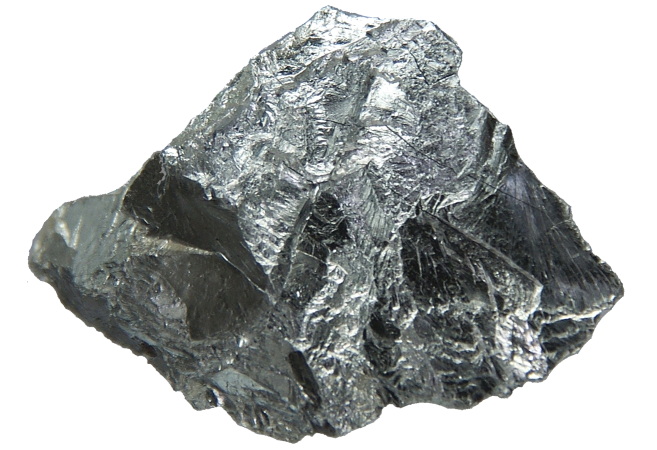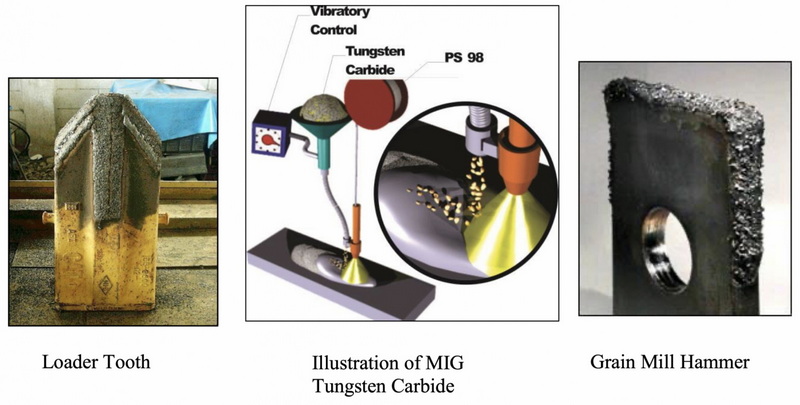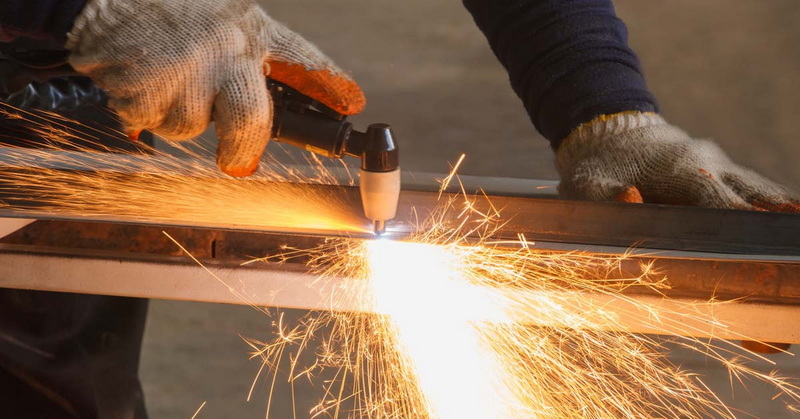Content Menu
● Introduction
● What is Calcium Carbide?
● Production of Calcium Carbide
>> The Electric Arc Furnace Method
● Acetylene Generation from Calcium Carbide Powder
>> Chemical Reaction
>> Methods of Acetylene Production
>>> Wet Process
>>> Dry Process
>> Process Description in Acetylene Gas Plants
● Industrial Uses of Acetylene
>> Welding and Cutting
>> Production of Chemicals
>> Steel Industry
>> Other Applications
● Safety Measures
>> Controlled Conditions
>> Ventilation
>> Personal Protective Equipment (PPE)
>> Storage
>> Experimentation
● Conclusion
● FAQ
>> 1. What is the chemical formula of calcium carbide?
>> 2. How is acetylene gas produced from calcium carbide?
>> 3. What are the primary industrial applications of acetylene?
>> 4. What safety precautions should be taken when handling calcium carbide?
>> 5. What is the difference between the wet and dry processes of acetylene production?
● Citations:
Introduction
Calcium carbide CaC2, also known as calcium acetylide, is a chemical compound primarily used for the production of acetylene gas and calcium cyanamide[3]. Acetylene serves as a crucial component in various industrial applications, including welding, cutting, and the synthesis of chemicals like PVC[2][7]. This article explores the uses of calcium carbide powder for acetylene production, its production methods, industrial applications, and safety measures.

What is Calcium Carbide?
Calcium carbide is a chemical compound with the formulaCaC2[3]. Technical-grade calcium carbide usually consists of 80–85% of CaC2, with the rest being CaO (calcium oxide), Ca3P2(calcium phosphide), CaS (calcium sulfide), Ca3N2(calcium nitride), SiC (silicon carbide), and C (carbon)[3]. It is a greyish-white solid that reacts vigorously with water to produce acetylene gas[10]. The impurities in technical-grade calcium carbide give off an unpleasant odor reminiscent of garlic in the presence of trace moisture[3].
Production of Calcium Carbide
Calcium carbide is produced industrially in an electric arc furnace from a mixture of lime (calcium oxide) and coke (a carbon source) at approximately 2,200 °C (3,990 °F)[3]. The reaction is endothermic, requiring 460 kJ per mole, and high temperatures to drive off carbon monoxide[3].
The chemical reaction is:[3]
CaO + 3C→ CaC2 + CO
The resulting carbide product typically contains around 80% calcium carbide by weight[3]. The carbide is then crushed into smaller lumps, ranging from a few millimeters up to 50 mm. The CaC2 content is determined by measuring the amount of acetylene produced upon hydrolysis[3].
The Electric Arc Furnace Method
The electric arc furnace method, discovered in 1892, involves heating a mixture of quicklime and coke at high temperatures. This process requires significant energy and strict safety measures due to the reactive nature of the product[2].
Acetylene Generation from Calcium Carbide Powder
Chemical Reaction
The production of acetylene from calcium carbide involves a chemical reaction with water. When calcium carbide CaC2 reacts with water H2O, it produces acetylene gas C2H2 and calcium hydroxideCa(OH)2[5][9].
CaC2 + 2H2O → C2H2 + Ca(OH)2
This reaction is exothermic, generating heat as the chemical bonds between calcium and carbon atoms break down[7]. The heat needs to be controlled to prevent overheating and potential hazards.
Methods of Acetylene Production
Acetylene production from calcium carbide can be performed through either a wet or dry process[1].
Wet Process
In the wet process, calcium carbide is added to water in a controlled environment. The reaction produces acetylene gas and calcium hydroxide as a byproduct. This method is widely used due to its simplicity and ease of control[4]. The gas flow rate is managed by pressure switches that regulate the feeding of calcium carbide. Continuous mixing is achieved using rotating paddles within the reactor[4].
After production, the gas is cooled in a spray chamber, scrubbed to remove impurities, and dried[4].
Dry Process
In the dry process, water is sprayed onto calcium carbide. This method is less common but can be used in specific industrial applications.
Process Description in Acetylene Gas Plants
Acetylene gas plants typically consist of several components that play significant roles in acetylene production[6].
1. Generator: Calcium carbide is mixed with water to produce acetylene gas. The generator includes automatic control sensors, feeders, hoppers, agitators, and arrestors[11].
2. Condenser: This cools the acetylene gas produced in the generator[11].
3. Ammonia Scrubber: This removes ammonia from the acetylene stream before purification[11].
4. Purification Tower: Acetylene gas passes through a purification tower to remove impurities such as hydrogen sulfide and phosphine[1].
5. Compressor: The acetylene gas is pressurized using a compressor[1].
6. Oil-Water Separator and Dryer: Further purification and dehydration occur here[1].
7. Acetylene Cylinders: The purified acetylene gas is filled into steel cylinders containing acetone to form dissolved acetylene for safe storage and transportation[1].

Industrial Uses of Acetylene
Acetylene produced from calcium carbide has numerous industrial applications[2].
Welding and Cutting
Acetylene gas is widely used in metal welding, cutting, and brazing due to its high temperature and flame stability[2][10].
Production of Chemicals
Acetylene is a crucial raw material for producing various chemicals, including vinyl chloride for PVC production, acetylene black, and synthetic rubber[2][7][10]. In China, acetylene from calcium carbide is a primary raw material for the chemical industry, particularly for PVC production[3].
Steel Industry
In the steel industry, calcium carbide is used in the desulfurization of steel, reacting with sulfur impurities to form calcium sulfide, which is then removed from the molten steel[2][10].
Other Applications
Calcium carbide is also used in the manufacture of calcium cyanamide, a fertilizer[3]. In some regions, it is used as a ripening agent for fruits, although this practice raises health concerns[10].
Safety Measures
The reaction between calcium carbide and water is highly exothermic and produces flammable acetylene gas. Safety measures are essential to prevent accidents[2].
Controlled Conditions
The reaction should be conducted under controlled conditions with pressure and temperature sensors, as well as non-return valves[11].
Ventilation
Adequate ventilation is necessary to prevent the accumulation of acetylene gas, which can form explosive mixtures with air.
Personal Protective Equipment (PPE)
Workers should wear appropriate PPE, including gloves, face masks, and protective glasses, to avoid contact with calcium carbide and its byproducts[4].
Storage
Calcium carbide should be stored in a dry, well-ventilated area, away from moisture and potential sources of ignition.
Experimentation
Experiments involving calcium carbide and water should only be conducted under professional supervision due to the risk of explosions[5].
Conclusion
Calcium carbide powder is a vital raw material in the production of acetylene, a gas with wide-ranging industrial applications. The reaction between calcium carbide and water is a well-established method for generating acetylene, used in welding, chemical synthesis, and steelmaking. While this process is efficient, it requires strict adherence to safety protocols due to the exothermic nature of the reaction and the flammability of acetylene gas. Proper handling, storage, and ventilation are crucial to prevent accidents and ensure a safe working environment.

FAQ
1. What is the chemical formula of calcium carbide?
The chemical formula of calcium carbide is CaC2[3].
2. How is acetylene gas produced from calcium carbide?
Acetylene gas is produced by reacting calcium carbide with water. The chemical equation is:
CaC2 + 2H2O → C2H2 + Ca(OH)2[5][9]
3. What are the primary industrial applications of acetylene?
Acetylene is primarily used in welding and cutting, the production of chemicals such as PVC, and in the steel industry for desulfurization[2][7][10].
4. What safety precautions should be taken when handling calcium carbide?
Safety precautions include conducting the reaction under controlled conditions, ensuring adequate ventilation, using personal protective equipment, and storing calcium carbide in a dry place[4][11].
5. What is the difference between the wet and dry processes of acetylene production?
In the wet process, calcium carbide is added to water, while in the dry process, water is sprayed onto calcium carbide[1]. The wet process is more commonly used due to its simplicity and ease of control[4].
Citations:
[1] https://www.tjtywh.com/acetylene-generation.html
[2] https://www.tjtywh.com/a-the-uses-and-production-of-acetylene-calcium-carbide.html
[3] https://en.wikipedia.org/wiki/Calcium_carbide
[4] https://www.ijsrd.com/articles/IJSRDV8I30699.pdf
[5] https://melscience.com/US-en/articles/chemical-characteristics-calcium-carbide-and-its-r/
[6] https://rexarc.com/blog/know-how-acetylene-is-produced-in-acetylene-plant/
[7] https://www.tjtywh.com/a-the-role-of-acetylene-calcium-carbide-in-industrial-applications.html
[8] https://www.acetylenegasplant.com/description.php
[9] https://www.alzchem.com/en/company/news/calcium-carbide-for-acetylene-production/
[10] https://www.nanorh.com/product/calcium-carbide-powder/
[11] https://rexarc.com/blog/calcium-carbide-for-acetylene-production/
[12] https://tianyuanweihong.en.made-in-china.com/product/nwFaUQobJmVY/China-Buy-Calcium-Carbide-for-Acetylene-Production-Carbide-Uses.html
[13] https://patents.google.com/patent/CN105085148A/en
[14] https://www.youtube.com/watch?v=ovcYzWvyKVo
[15] https://www.eiga.eu/uploads/documents/DOC226.pdf
[16] https://www.acs.org/education/whatischemistry/landmarks/calciumcarbideacetylene.html
[17] https://cdn.intratec.us/docs/reports/previews/acetylene-e31a-b.pdf
[18] https://www.alamy.com/stock-photo/calcium-carbide-with-water.html
[19] https://www.shutterstock.com/search/calcium-carbide
[20] https://www.acetylenegasplant.com/acetylene-gas.php
[21] https://www.sciencesource.com/2449635-calcium-carbide-reacts-with-water-4-of-4-stock-image-rights-managed.html
[22] https://stock.adobe.com/search?k=%22calcium+carbide%22
[23] https://www.shutterstock.com/image-photo/calcium-carbide-cac2-water-reacts-on-2041401479
[24] https://www.shutterstock.com/search/cac2
[25] https://www.alamy.com/stock-photo/acetylene-gas-plant.html
[26] https://www.sciencesource.com/2418691-calcium-carbide-reacts-with-water-stock-video-rights-managed.html
[27] https://www.istockphoto.com/photos/calcium-carbide
[28] https://www.youtube.com/watch?v=olAlOs0Er00
[29] https://www.alzchem.com/fileadmin/Marken/Technische_Gase/20220924_Technical_Gases_2-Seiter_WEB.pdf
[30] https://www.alamy.com/stock-photo/calcium-reaction-water.html
[31] https://www.alamy.com/stock-photo/calcium-carbide.html
















